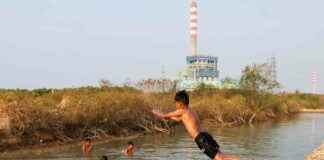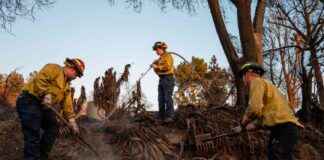The much-anticipated third season of the HBO show White Lotus premiered this past weekend, shedding light on the dark side of tourism. This acclaimed series showcases the stark class divisions between affluent Western travelers indulging in luxury resorts and the local communities reliant on serving their needs. As viewers eagerly delve into the new season set on Koh Samui, an island off the coast of Thailand, questions arise about how such exposure affects tourism in these locations.
In a recent article for Grist, journalist Sarah Stodola delves into the measures being taken by Koh Samui to anticipate and address the challenges that come with increased tourism, particularly in the wake of a popular television show. Thailand’s second-largest island, Koh Samui, is a popular destination that has long grappled with the conflict between its stunning natural beauty and the overwhelming influx of tourists. With a local population of 70,000 dwarfed by millions of annual visitors, the island faces strained water resources, mounting waste management issues, and ecological damage due to construction activities.
The struggle faced by Koh Samui is not unique. Across the globe, communities have become reliant on tourism revenue while bearing the brunt of overtourism’s negative impacts. However, Stodola, an expert in the field who authored a book on the beach resort economy and its future in a changing climate, offers insights into how the industry can be transformed for the better. She emphasizes the importance of sustainability and equity in tourism, highlighting instances where governments have imposed limits on tourism flow and hotels have prioritized the well-being of local communities.
One such success story is NIHI Sumba, a luxury resort on an Indonesian island that tackled high malaria rates in the surrounding community by providing mosquito nets. The resort’s initiative led to a significant decrease in malaria-related deaths, showcasing the positive outcomes that responsible tourism practices can yield. Stodola also advocates for a shift in mindset among travelers, encouraging them to adapt to local customs and environments rather than expecting destinations to conform to their preferences.
In a candid Q&A session, Stodola further elaborates on the complexities of travel and tourism, shedding light on the dual nature of the industry as both a positive and negative force. She acknowledges the role of capitalism in shaping tourism outcomes and underscores the need for increased government involvement to ensure sustainable practices. Stodola cites examples like Fernando de Noronha, an archipelago off the coast of Brazil, where strict limits on daily tourism have led to a successful balance between economic benefits and environmental preservation.
Looking ahead, Stodola envisions a future for sustainable tourism that prioritizes regional and local travel, reducing the environmental impact of long-haul flights. By focusing on the well-being of local communities and fostering cultural exchange, she believes that tourism can evolve into a more harmonious and mutually beneficial endeavor. As destinations like Koh Samui navigate the complexities of tourism development, the lessons learned from past experiences, such as the overtourism crisis at Maya Bay following the release of “The Beach,” serve as cautionary tales of the delicate balance between economic growth and environmental conservation.
As travelers and industry stakeholders alike grapple with the challenges and opportunities presented by the evolving landscape of tourism, Stodola’s insights offer a roadmap towards a more sustainable and equitable future for the industry. By embracing responsible practices, fostering community engagement, and prioritizing environmental stewardship, destinations can pave the way for a brighter, more resilient tourism sector that benefits both visitors and locals alike.














